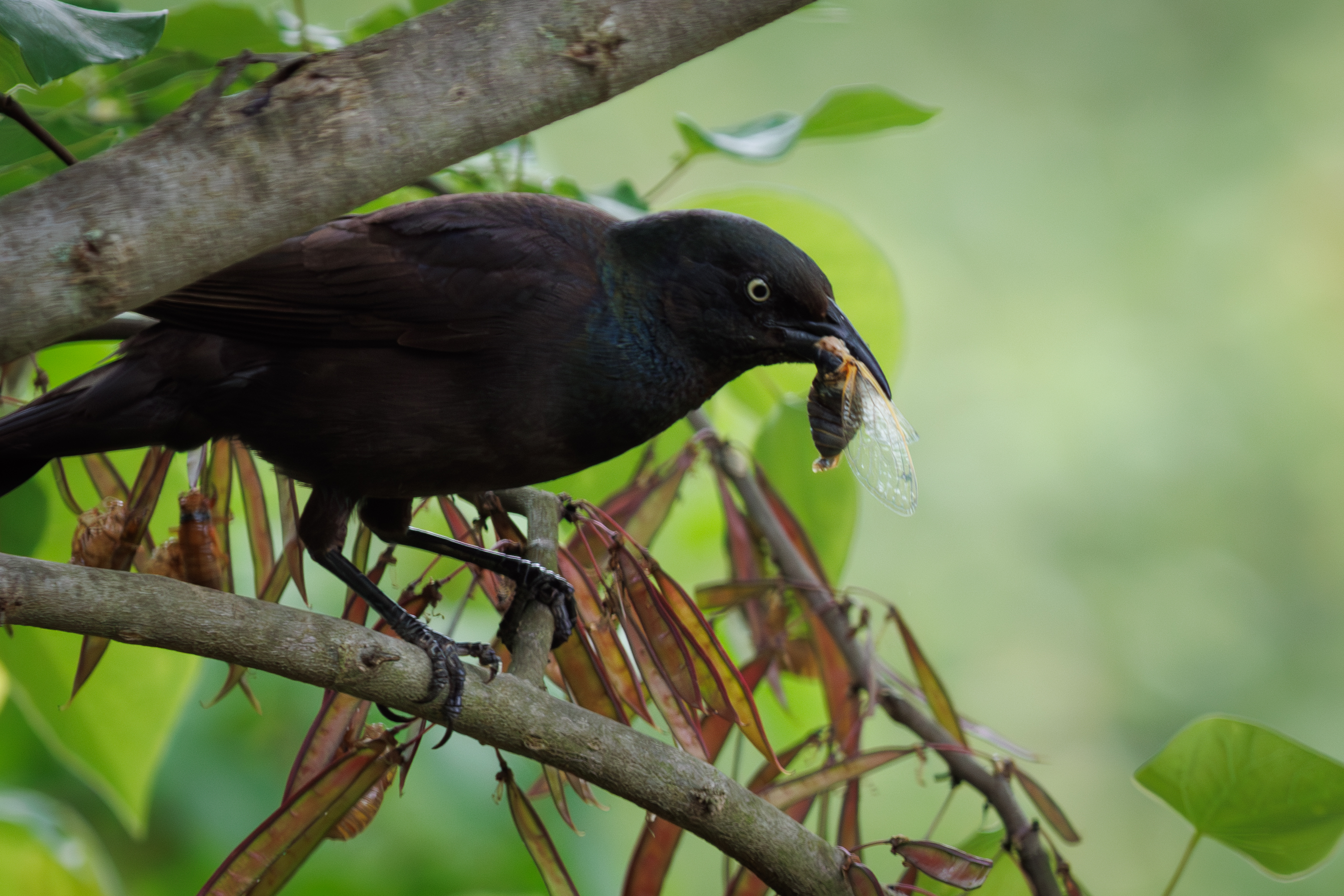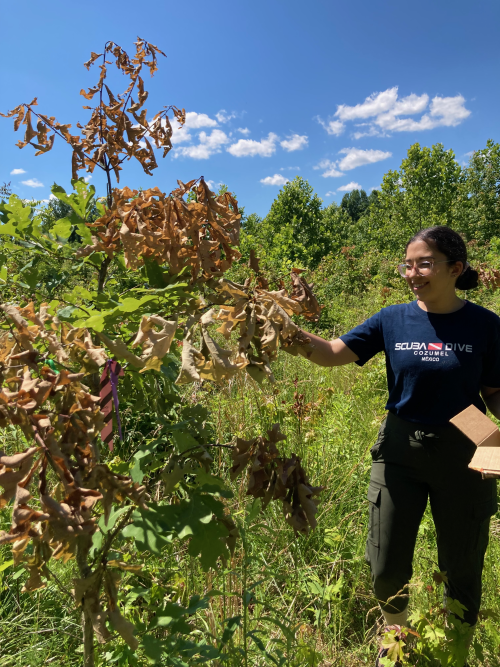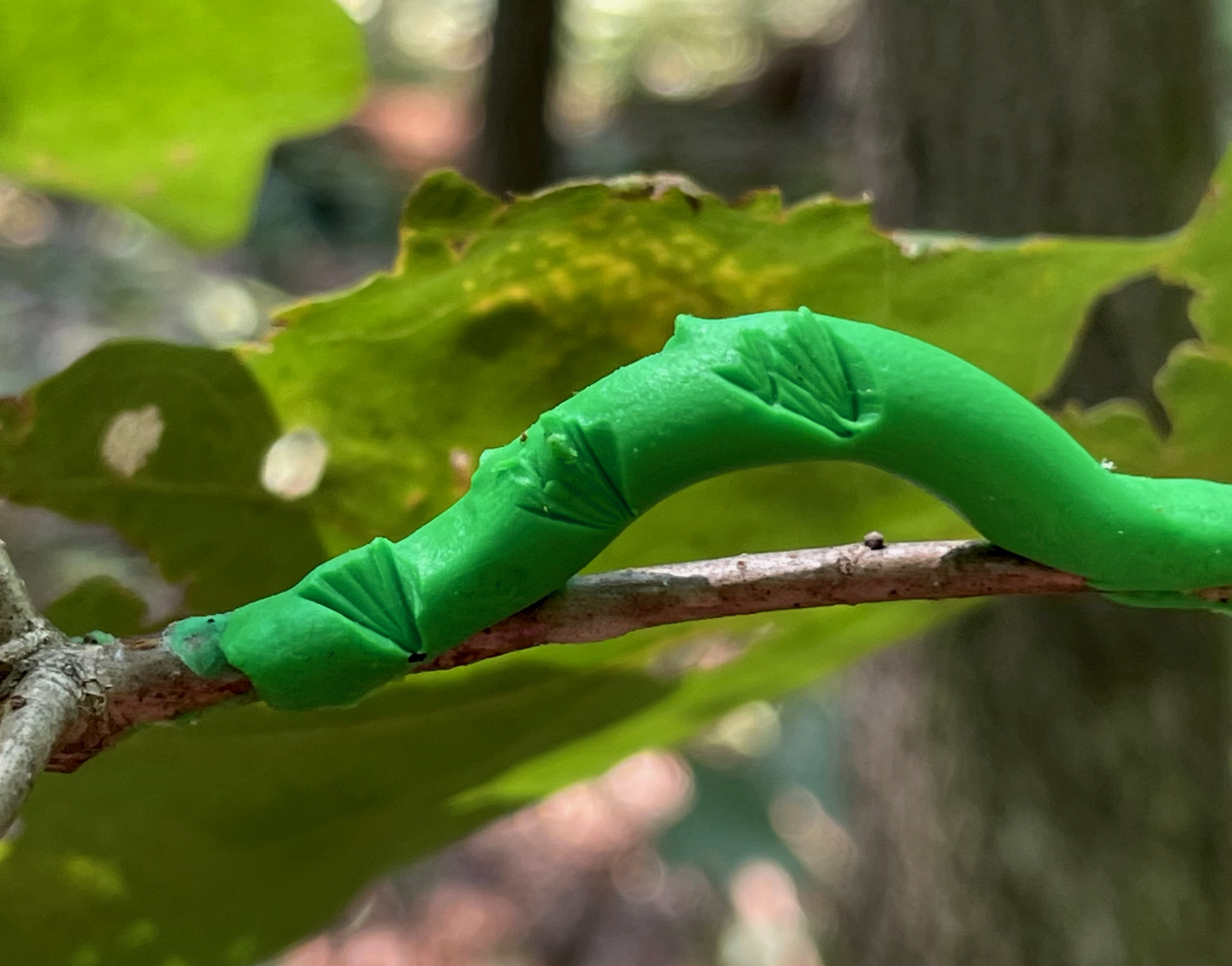It happens every 13 or 17 years. A billion-strong army of cicadas emerges from the ground, blanketing forests and tree-lined streets across the eastern United States. Harmless to people and pets, the bug barrage is mostly an annoyance as they dive bomb into car windshields and loudly buzz through backyard barbeques.
But while the insect invasion lasts just five to seven weeks, it leaves behind a legacy of environmental mayhem—eating away at forest ecosystems and disrupting the food chain among birds, caterpillars and trees.
A new study led by George Washington University researchers revealed that the 2021 Brood X cicada emergence —one of the largest ever—served as an “all you can eat buffet” of cicadas that shifted the feeding patterns of birds, said Zoe Getman-Pickering, first author of the study and a former postdoctoral researcher at the Columbian College of Arts and Sciences (CCAS) Department of Biological Sciences.
The sudden cicada feeding frenzy spurred a ripple effect throughout the forest food webs. More than 80 species of birds stopped snacking on caterpillars, their typical prey. Left to grow free from their main predator, the exploding caterpillar population in turn caused increased leaf damage on their host oak trees.
“Our primary question was: If birds are changing their diets to feed on this abundant food item, what effects might that diet shift have for the forest community?” said Professor of Biology John Lill, a co-author of the study, which was published in the journal “Science.”
Indeed, the team’s findings spotlight the interconnectedness of plants, animals and organisms in a shared environment—and how a change in the behavior of just one member sends shockwaves through the entire ecosystem. Combined with human intrusion—through factors like climate change, over-development and the introduction of invasive species—the rewired forest food chain may have larger implications for ecological issues from bird conservation to forestry and agricultural threats.
“Even events that seem very small can have big and surprising impacts on organisms that are much more connected than we might have imagined,” Getman-Pickering said.
Fake caterpillars, real results
The team, which also included researchers from Georgetown University and the University of Maryland, spent four years collecting data at two Maryland conservation study sites, comparing conditions before, during and after the 2021 cicada emergence. They observed bird feeding patterns and recruited the help of the broader birding community to crowdsource observational data.
The researchers counted the number of caterpillars on oak trees during the emergence and measured the subsequent damage they caused to leaves. They also planted decoy clay caterpillars throughout the forests—gluing about four fake caterpillars on the branches of each tree—to record whether the birds attempted to attack the caterpillar prey.
For then-CCAS research assistant Sarah Shamash, B.S. ’23, the summer fieldwork meant watching foraging birds through binoculars and “turning over every leaf to look for caterpillars,” she said—all while braving 100 degree temperatures, swatting ticks and mosquitoes and “deriving immense joy and satisfaction” from the hands-on research.
A former Harlan Research Fellow and Luther Rice Award winner, Shamash said her time on the project and the mentorship of Lill and the other researchers changed her entire career trajectory. “I walked into the field on that first day as a committed pre-med student excited to try something new,” she said. “I never could have imagined that I would leave as an ecologist.” She even celebrated the project’s conclusion by getting a cicada tattoo. Now Shamash works as a researcher for the Illinois Natural History Survey, studying conservation and management of Lake Michigan’s fisheries. “I jumped from cicadas and caterpillars to salmon and shiners,” she laughed.
Lill said their cicada research not only illuminates the emergence’s effect on food chains. It also offers clues to other ecological threats—like the decades-long pattern of bird decline.
“One way to interpret the results is that by demonstrating what happens when birds’ activity…is disrupted, we might get a glimpse of what a world with fewer birds looks like—with increased damage to both forestry and important agricultural crops,” he said. “It’s yet another reason why we need to concentrate efforts at conserving birds. Not only will we be preserving birds for people that like to hear them and watch them. We will also be preserving the important, essential ecosystem service that they provide.”
Meanwhile, the researchers said the threat may be more pressing than ever—because even more cicadas are on their way. Scientists anticipate a historical convergence of two broods—Brood XIII and Brood XIX—scheduled to emerge at the same time in spring 2024, an event that last occurred in 1803.
“In terms of documenting the complex species impacts that the cicada emergence has on this ecosystem,” Getman-Pickering said, “we really are just at the tip of the iceberg.”





